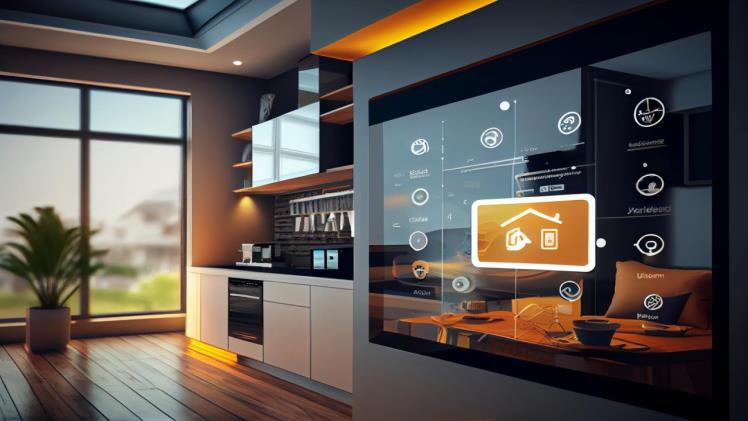Smart homes were once synonymous with convenience—voice-controlled lights, thermostats you could adjust from your phone, or coffee makers that brewed before you got out of bed. But in 2025, smart home technology is no longer just about luxury or automation. It’s becoming a vital tool for energy efficiency, health monitoring, safety, sustainability, and even emotional well-being.
This article explores how smart homes are evolving beyond convenience and reshaping how we live, care for our loved ones, and interact with our environments.
1. From Automation to Personalization
Early smart homes focused on pre-programmed settings—lights turning on at dusk or thermostats adjusting based on time. Now, homes are learning your habits. AI-powered platforms like Google Home and Amazon Alexa analyze behavior patterns and make real-time adjustments based on your mood, energy use, and preferences.
For example:
- Smart lighting that adapts color temperature based on the time of day to improve sleep.
- HVAC systems that adjust automatically for maximum energy efficiency based on occupancy and outdoor conditions.
- Smart blinds that open and close based on sunlight and room temperature.
2. Smart Homes as Health Monitors
Health-focused features are one of the fastest-growing aspects of smart homes. With aging populations and rising interest in wellness, smart devices now support physical and mental health.
Examples include:
- Air quality sensors that alert you to allergens or pollutants.
- Smart beds that track sleep patterns and breathing.
- Voice assistants that detect stress in your voice and offer breathing exercises or meditations.
- Smart toilets that analyze urine or stool for early signs of illness.
Elderly care is also being transformed by motion sensors and fall detection systems, enabling seniors to live independently while their families stay informed.
3. Sustainability and Energy Efficiency
Eco-conscious living is a major driver of smart home innovation. Systems are being designed to reduce carbon footprints and utility bills without sacrificing comfort.
Key features include:
- Smart water meters that detect leaks and reduce waste.
- Solar-powered homes that use AI to store and deploy energy efficiently.
- Appliances that run during off-peak hours to lower grid stress and reduce costs.
- Integration with electric vehicles and energy management systems.
Smart homes are now playing a central role in achieving broader climate goals at the household level.
4. Advanced Security and Privacy Protection
Today’s smart home security is about more than video doorbells and remote locks. AI-driven systems detect unusual behavior, differentiate between residents and strangers, and even alert homeowners about open doors, forgotten stoves, or water leaks.
Facial recognition, biometric entry, and machine learning algorithms make homes smarter in real-time—but also raise concerns about data privacy. As a result, the industry is shifting toward local device processing, encrypted storage, and user-controlled permissions.
5. Emotional Well-being and Mental Health Support
Smart homes are increasingly designed to promote mental wellness. Ambient lighting, calming soundscapes, and digital detox timers are becoming staples of modern home automation.
Some innovative systems offer:
- Mood detection via voice or facial recognition.
- Personalized playlists or scent diffusers triggered by emotion-tracking sensors.
- Smart mirrors that combine mental check-ins with daily planning tools.
The line between smart home and emotional support system is blurring.
6. Interconnected Ecosystems and Seamless Integration
One of the biggest shifts in recent years is interoperability. Previously, homeowners had to choose between Google, Apple, or Amazon-compatible devices. But with new standards like Matter (developed by Apple, Google, Amazon, and others), devices from different brands now communicate more easily, creating seamless home ecosystems.
This enables:
- Unified control panels or apps.
- Simplified device setup and syncing.
- Greater flexibility and customization for users.
7. Smart Homes Supporting Remote Work and Learning
With remote work and online learning now permanent for many, smart homes offer more than convenience—they support productivity, focus, and work-life balance.
Features include:
- Automated lighting and noise reduction during work hours.
- Smart desks with posture correction reminders.
- Virtual assistants scheduling meetings and organizing files.
- Wi-Fi prioritization for work devices.
8. AI-Driven Predictive Maintenance
Predictive maintenance tools in smart homes can now detect appliance inefficiencies or failures before they happen, reducing repair costs and extending product life.
Examples:
- Refrigerators that alert you to door seal problems.
- HVAC systems notifying you when filters need replacing.
- Washing machines detecting imbalance or motor issues.
Conclusion
Smart homes are no longer about novelty or futuristic gadgets. They are evolving into intelligent ecosystems that support sustainable living, enhance safety, optimize health, and nurture mental well-being. As technology continues to advance, the future of home automation will be less about convenience—and more about meaningful, responsive, and even empathetic environments that improve the quality of life.
FAQ: How Smart Homes Are Evolving Beyond Convenience
1. What is a smart home, and how is it different today than five years ago?
A smart home uses connected devices and automation to control lighting, climate, security, and more. Today’s systems go beyond convenience, focusing on personalization, health, energy efficiency, and emotional wellness.
2. How do smart homes support mental health?
Through features like ambient lighting, sound therapy, stress detection, and mood-based personalization, smart homes can promote relaxation, reduce anxiety, and support better sleep and mindfulness.
3. Can smart homes really help reduce energy bills?
Yes. Smart thermostats, lighting, appliances, and solar integration help optimize usage, reduce waste, and run devices during cheaper, off-peak hours.
4. Are smart homes safe from hacking or data leaks?
Modern systems now use end-to-end encryption, local data processing, and two-factor authentication to enhance security. However, users must still practice good cyber hygiene.
5. What is Matter, and why is it important for smart homes?
Matter is a new industry standard that allows devices from different brands to work together more easily, making smart home setups more flexible and user-friendly.
6. Can smart homes help care for elderly family members?
Yes. With motion sensors, emergency alerts, fall detection, and voice-controlled assistants, smart homes enable safer independent living for seniors while keeping family members informed.
7. What types of health data can smart home devices track?
Devices can monitor air quality, sleep patterns, heart rate, stress levels, and even analyze bathroom habits to detect early health issues.
8. How can smart homes support remote work?
Smart homes provide work-friendly environments with adjustable lighting, noise control, internet prioritization, and productivity reminders.
9. Are smart homes environmentally sustainable?
They can be. When integrated with renewable energy sources and optimized for energy efficiency, smart homes contribute to reducing carbon footprints.
10. Do smart homes require a full renovation to implement?
No. Many smart devices are plug-and-play or require minimal installation. You can start small (e.g., smart bulbs or thermostats) and expand gradually.






